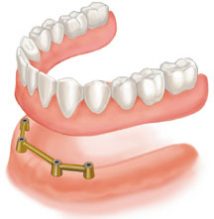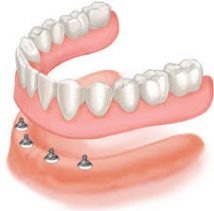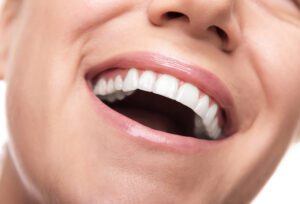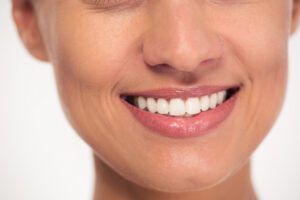An implant-supported denture is a type of overdenture that is supported by and attached to implants. Regular dentures rest on the gums, and are not supported by implants.
Implant supported dentures may be used when a person doesn’t have any teeth in the jaw, but has enough bone in the jaw to support implants. These dentures have special attachments in their base that fit onto attachments on the implants helping to make the denture more stable during function. This makes the denture less likely to move while eating and speaking and helps improve not only your ability to chew but also your overall appearance.
What Are Implant Supported Dentures?
Implant-supported dentures are most often made for the lower jaw because regular dentures tend to be less stable there. Usually, a regular denture made to fit an upper jaw is quite stable on its own and doesn’t need the extra support with implants. However, implant-supported dentures may be made for either the upper or lower jaw. As with regular dentures, implant-supported dentures need to be removed at night to clean the denture and gum area.
How Do They Work?
The denture base is made from pink acrylic that mimics the appearance of the gums. Acrylic teeth that look like natural teeth are attached to the base. There are two main types of implant supported over dentures. Both types need at least two implants support.

Bar-retained Dentures
A thin metal bar following the natural curve of the jaw is attached to implants that have been placed in your jawbone. Clips or other types of attachments are fitted to the denture. The denture fits over the bar and is securely clipped into place by the attachments.

Ball/Stud-retained Dentures
The implants in the jawbone hold a metal (‘male’) attachment that fits into another attachment on the denture base (‘female’). The implants usually are placed in the jawbone at the front of the mouth because there tends to be more bone in this area. Once the implants are placed there may be a healing period of up to six months before the attachments are fitted onto the implants and denture base. Before it is decided whether implants are suitable your medical history is checked and a CT scan may be required to make measurements of the jawbone.





